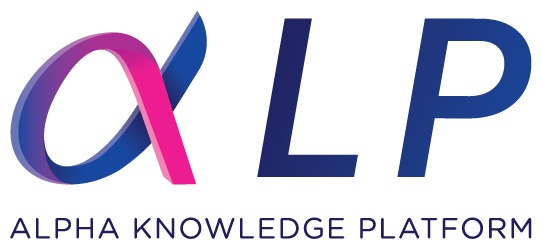TickerTape
Weekly Global Stablecoin & CBDC Update

This Week’s Stories
- Minna no Bank Partners with Solana and Fireblocks
- JPM Forecasts Conservative $500B Stablecoin Market
- CBB Unveils Stablecoin Issuance Framework
- BISIH Launches Open Call for PETs in Financial Crime Prevention
- BIS: Quantum-Readiness Roadmap
- Project Acacia to Advance wCBDC Trials
- BISIH: Project Leap Phase 2 for Quantum-Proof Payment Systems
- BIS: Tokenised Bonds Assessment & Roadmap
Minna no Ginko, Japan’s first digital-native bank, has announced a landmark partnership with Solana Japan and Fireblocks to launch a stablecoin pilot in July 2025. The initiative aims to integrate stablecoins into Japan’s financial ecosystem by using Solana’s fast, scalable blockchain for payments and real-world asset tokenization. The project specifically targets Japan’s mobile-first consumers, particularly the younger demographic, and combines Solana’s technical advantages with Fireblocks’ security infrastructure and TIS Inc’s integration capabilities. This pilot reflects the growing role of stablecoins as practical financial tools rather than speculative assets and underscores Japan’s regulatory efforts to embrace blockchain innovation in banking.
Key Takeaways
- Strategic Collaboration: Minna Bank, Solana Japan, Fireblocks, and TIS Inc have joined forces to pioneer stablecoin payments and asset tokenization in Japan.
- Launch Timeline: The pilot will begin in July 2025, focusing on mobile banking, Web3 wallets, and tokenized assets.
- Target Audience: Designed for Japan’s digitally savvy, mobile-first consumers aged 15–39.
- Technological Strengths: Solana’s high-speed, low-cost blockchain will power transactions, while Fireblocks ensures secure custody and transfers.
- Regulatory Alignment: The project is timely as Japan develops regulatory frameworks to safely integrate stablecoins into the financial system.
- Global Context: Reflects a broader trend of traditional banks adopting blockchain technology to improve efficiency and competitiveness.
Why it Matters
- Innovation Blueprint: The pilot could serve as a model for other banks in Asia and globally to combine regulated banking with blockchain-based payments and asset trading.
- Consumer Adoption: By targeting everyday payments and mobile-first users, the project has the potential to normalise stablecoins in mainstream finance.
- Regulatory Significance: Successful implementation under evolving Japanese regulations may accelerate broader legal clarity and adoption of digital assets.
- Competitive Advantage: Positions Minna Bank as an early mover in blockchain-driven banking, potentially strengthening Japan’s leadership in digital financial innovation.
- Ecosystem Development: Shows how collaboration among fintech, blockchain developers, and traditional institutions can overcome scalability and compliance barriers.
JPMorgan published a conservative forecast, projecting the stablecoin market will reach only $500 billion by 2028, significantly lower than the $2-4 trillion estimates from other major financial institutions. The bank’s analysis, contradicting bullish predictions from Standard Chartered ($2 trillion by 2028) and Bernstein ($4 trillion over the next decade), cited minimal mainstream adoption as the primary limiting factor. JPMorgan estimates the current stablecoin market at $250 billion, with payment adoption representing just 6% of total demand (approximately $15 billion), while the majority remains concentrated in cryptocurrency trading, decentralized finance, and collateral applications. The bank emphasized that regulatory hurdles, limited use cases outside crypto markets, and scattered regulatory environments create significant barriers to widespread adoption. JPMorgan’s assessment challenges the prevailing narrative that stablecoins will replace traditional fiat currencies for everyday transactions, arguing that the transition to mainstream payment adoption faces substantial obstacles despite recent legislative progress like the Senate’s passage of the GENIUS Act.
Key Takeaways:
- JPMorgan projects stablecoin market growth to $500 billion by 2028, half of other major bank forecasts
- Only 6% of current stablecoin demand ($15 billion) is for payments, with 94% for trading and DeFi
- Bank challenges bullish predictions from Standard Chartered ($2T) and Bernstein ($4T) projections
- Current market valued at $250 billion with majority usage in crypto trading and collateral
- Regulatory fragmentation and limited use cases cited as major adoption barriers
Why it Matters:
- Provides contrarian view to prevailing optimistic stablecoin growth narratives in the market
- Highlights the gap between crypto-native usage and mainstream payment adoption
- Demonstrates institutional skepticism about stablecoins replacing traditional payment systems
- May influence regulatory approaches by tempering expectations about stablecoin market impact
- Reflects ongoing debate about the real-world utility of stablecoins beyond cryptocurrency markets
The Central Bank of Bahrain (CBB) has unveiled a new regulatory framework for stablecoin issuers, aiming to safely integrate stablecoins into the nation’s financial system. This initiative permits licensed entities to issue single-currency stablecoins backed by the Bahraini Dinar, US Dollar, or other CBB-approved fiat currencies. The regulation seeks to mitigate risks associated with unregulated stablecoins, fostering investor confidence and promoting sustainable growth in the crypto sector. This move, announced during the FS Horizons event, reinforces Bahrain’s ambition to become a leading financial hub in the MENA region by encouraging innovative financial technologies and ensuring comprehensive oversight of the crypto-asset market. The new “Stablecoin Issuance and Offering (SIO) Module” is now accessible in Volume 6 of the CBB Rulebook.
Key Takeaways:
- The CBB has established a new framework for licensing and regulating stablecoin issuers.
- Licensed issuers can now issue stablecoins backed by BHD, USD, or other CBB-approved fiat currencies.
- The regulation aims to reduce risks from unregulated stablecoins, enhance investor confidence, and promote sector growth.
- The initiative reinforces Bahrain’s position as a prominent financial hub in the MENA region.
- The new “Stablecoin Issuance and Offering (SIO) Module” is available in the CBB Rulebook.
Why it Matters:
- Financial Stability: This framework helps ensure the stability and security of the financial system by bringing stablecoins under regulatory oversight, mitigating potential risks associated with their volatility and misuse.
- Innovation and Growth: By providing a clear regulatory path, Bahrain encourages the development and adoption of innovative financial technologies, fostering growth in the crypto-asset market and positioning the country as a leader in digital finance.
- Investor Protection: The comprehensive oversight and robust investor protection measures outlined in the regulation build trust and confidence among investors in the crypto-asset market.
- Regional Leadership: This proactive step by the CBB enhances Bahrain’s reputation as a progressive financial hub, potentially attracting more fintech businesses and investments to the region.
- Global Harmonization: As more countries move towards regulating digital assets, Bahrain’s framework contributes to the broader effort of establishing clear global standards for stablecoins, potentially influencing future international regulations.
The BIS Innovation Hub (BISIH) Nordic Centre launches an open call for case studies on the use of privacy-enhancing technologies (PETs) in multi-party collaborative analytics to tackle money laundering, fraud, and other financial crimes. This initiative is part of Phase 2 of Project Aurora, which explores the opportunities and challenges of leveraging PETs and advanced analytics to enhance the effectiveness of information-sharing and data techniques in anti-money laundering and fraud prevention.
The open call aims to gather real-world examples of PET deployments, examine their impact on the effectiveness of collaborative analytics, and identify the implications in terms of both privacy protections and potential intrusions. Selected submissions will be invited to participate in a PET Deep Dive workshop in Stockholm in October 2025, where they will present their case studies and engage with a diverse group of stakeholders. The submission deadline is August 18, 2025.
Key Takeaways:
- The BIS Innovation Hub (BISIH) Nordic Centre has issued an open call for case studies on privacy-enhancing technologies (PETs) in multi-party collaborative analytics for combating financial crime.
- This initiative, part of Project Aurora Phase 2, aims to explore the use of PETs and advanced analytics to improve information sharing in anti-money laundering and fraud prevention.
- The call seeks real-world examples of PET deployments, their impact on collaborative analytics, and their implications for privacy.
- The submission deadline is August 18, 2025.
- Selected submissions will be invited to present their case studies at a PET Deep Dive workshop in Stockholm in October 2025.
Why It Matters:
- By focusing on real-world deployments and their impact, the initiative aims to provide practical insights that can inform the adoption and implementation of PETs in the fight against money laundering, fraud, and other financial crimes.
- The exploration of the implications of PETs, in terms of both privacy protections and potential intrusions, underscores the BISIH’s commitment to striking the right balance between effective crime prevention and data privacy.
- The participation of a diverse group of stakeholders, including academia, public sector, and private sector entities, in the PET Deep Dive workshop will foster cross-pollination of ideas and help identify the enabling factors for wider adoption of these technologies.
- The learnings from this open call and workshop will not only benefit the BISIH Nordic Centre but also the broader financial services industry and regulatory authorities, as they navigate the complex landscape of financial crime prevention in the digital age.
The BIS publishes “Quantum-readiness for the financial system: a roadmap”, presenting a strategic framework to guide the financial system’s transition to quantum-safe cryptographic infrastructures. It highlights the imminent threat posed by future cryptographically relevant quantum computers, which are expected to break today’s public key encryption, emphasizing the urgency due to the “harvest now, decrypt later” attack scenario.
The paper outlines Post-Quantum Cryptography (PQC) as the most viable near-term solution, detailing its standardization efforts by NIST and acknowledging its implementation challenges, such as increased computational requirements and integration complexities. It stresses that this transition is not a simple algorithm replacement but requires a fundamental overhaul of cryptographic infrastructures. The roadmap advocates for a multi-faceted approach, incorporating principles like cryptographic agility, defence in depth, and hybrid cryptographic schemes, to build more resilient systems.
A structured three-phase roadmap is presented for both systemic actors (like central banks) and individual financial institutions: awareness, planning, and execution. This includes raising internal awareness, conducting comprehensive cryptographic inventories, defining migration priorities, coordinating with vendors, and continuous testing and assessment. The document concludes by underscoring the pivotal role of central banks in leading and supporting this transition to safeguard trust and ensure the continued security and integrity of the global financial system.
Key Takeaways:
- Imminent Threat: Quantum computers pose an urgent and significant threat to current public key encryption (RSA, ECC), potentially enabling data decryption or signature forging.
- “Harvest Now, Decrypt Later” (HNDL): Encrypted data collected today is at risk of being decrypted in the future once quantum capabilities mature, necessitating immediate action.
- PQC is the Near-Term Solution: Post-Quantum Cryptography (PQC) is the most mature and available solution, but its implementation involves complex challenges like larger key sizes and higher computational requirements.
- Systemic and Phased Migration: The transition is not a simple algorithm replacement but a complex, multi-year overhaul requiring a coordinated, phased approach across the entire financial system.
- Core Principles for Resilience: Defence in Depth, Cryptographic Agility, and Hybrid Cryptographic Schemes are crucial design principles for building adaptable and resilient cryptographic infrastructures.
- Central Banks Lead: Central banks are uniquely positioned to drive awareness, coordinate efforts, and ensure the timely migration to quantum-safe environments across the financial sector due to their role in trust and stability.
- RSA Depreciation: Existing asymmetric cryptography like RSA will need to be discontinued, with NIST planning its deprecation after 2030 and disallowance after 2035.
Why It Matters:
- Safeguarding Financial Stability: Cybersecurity incidents within the financial system, exacerbated by quantum threats, can undermine public trust and threaten global stability.
- Protecting Sensitive Data: The quantum threat directly impacts the confidentiality, integrity, and authenticity of financial information and payment transactions, risking data breaches and non-compliance with regulations like GDPR.
- Ensuring Long-Term Contract Validity: For long-lived digital signatures on financial contracts, a timely migration is critical to prevent future quantum forgeries and maintain legal validity.
- Maintaining Operational Resilience: Compromised cryptographic algorithms could allow attackers to gain unauthorized access to IT systems and disrupt critical financial operations.
- Building Future-Proof Infrastructure: The transition offers an opportunity to embed principles of security by design, cryptographic agility, and defence in depth, creating more resilient and adaptable systems against evolving cyber threats.
- Global Interoperability: The interconnectedness of the global financial system necessitates international coordination and alignment on quantum-safe standards and practices to avoid weak links and ensure seamless cross-border operations.
The Reserve Bank of Australia (RBA) and the Digital Finance Cooperative Research Centre (DFCRC) have announced a critical milestone for Project Acacia, selecting 24 industry participants to test the future of wholesale tokenised asset markets.
This collaborative effort, supported by ASIC, APRA, and The Australian Treasury, aims to build a more efficient, innovative, and robust financial infrastructure for the digital age. With ASIC providing regulatory relief for the pilot, Australia is creating a safe and effective environment to test these new frontiers.
The findings, expected in Q1 2026, could unlock significant economic potential and solidify Australia’s position as a leader in digital finance innovation. It’s a pivotal step towards a future where financial markets are more accessible, efficient, and dynamic.
Key Takeaways:
- Real-World Testing Begins: For the first time, trials will use actual money and assets, not just simulations. Asset classes include fixed income, private markets, trade receivables, and carbon credits.
- Diverse Settlement Assets: The project will test CBDCs, stablecoins, bank deposit tokens, and existing commercial bank deposits at the RBA.
- Technology Platforms Involved: Platforms include Hedera, Redbelly, R3 Corda, and Canvas Connect.
- Timeline: Testing will run for six months, with a final report expected in early 2026.
- Focus on Wholesale, Not Retail: The RBA has ruled out a retail CBDC for now, citing no economic benefit.
- Potential Benefits Identified: Reduced counterparty and operational risks, freed-up collateral, greater transparency and auditability, lower costs for institutions and customers.
Why it Matters:
- Global Leadership: Australia is positioning itself at the forefront of wholesale digital finance innovation.
- Financial Market Efficiency: If successful, this could streamline settlement, reduce risk, and cut costs in financial markets.
- Blueprint for Others: The outcomes may influence other central banks exploring wholesale CBDCs.
- Private Sector Collaboration: The project highlights the importance of public-private partnerships in shaping the future of digital finance.
The BIS Innovation Hub Eurosystem Centre, in collaboration with several European central banks and financial institutions, has launched Phase 2 of Project Leap. This initiative aims to prepare the central banking community for the challenges posed by emerging quantum computers, which could potentially break the cryptographic algorithms currently used to secure financial transactions and data.
Phase 2 of Project Leap focuses on exploring the implementation of post-quantum cryptography in a European payment system. The experiment involves sending liquidity transfers between the project’s central bank partners using post-quantum digital signatures. Initial testing has been encouraging, and the learnings from this project have the potential to pave the way towards quantum-proofing critical financial infrastructures.
The migration of payment systems to quantum-safe solutions is a complex and high-stakes process that requires a collaborative effort to address system interdependencies, performance impact, and interoperability. Project Leap’s work aims to ensure that the financial system is prepared for the emerging quantum threat.
Key Takeaways:
- The BIS Innovation Hub Eurosystem Centre, in collaboration with several European central banks and financial institutions, has launched Phase 2 of Project Leap to prepare the central banking community for the challenges posed by emerging quantum computers.
- Phase 2 of Project Leap focuses on exploring the implementation of post-quantum cryptography in a European payment system, involving liquidity transfers between the project’s central bank partners using post-quantum digital signatures.
- The learnings from Project Leap have the potential to pave the way towards quantum-proofing critical financial infrastructures, ensuring that the financial system is prepared against the emerging quantum threat.
Why It Matters:
- The launch of Project Leap Phase 2 highlights the central banking community’s proactive approach to addressing the potential risks posed by quantum computers to the security of financial transactions and data.
- By collaborating on the implementation of post-quantum cryptography in a real-world payment system, the project partners are gaining valuable insights that can inform the broader migration of critical financial infrastructures to quantum-safe solutions.
- The focus on addressing complex challenges, such as system interdependencies, performance impact, and interoperability, demonstrates the holistic approach taken by the project team to ensure a smooth and effective transition.
- Ultimately, Project Leap represents a critical step in the central banking community’s efforts to future-proof the financial system and ensure its continued resilience in the face of the quantum computing revolution.
The BIS publishes a bulletin on government bonds, the $80 trillion cornerstone of the global financial system undergoing a significant transformation through tokenisation. This process, creating digital representations of traditional assets on programmable platforms, promises to revolutionise market efficiency, liquidity, and accessibility.
Despite being in its early stages with around $8 billion in value across over 60 issuances, including those from governments like the Republic of Slovenia and Hong Kong SAR, tokenised bonds are already demonstrating tangible benefits. Empirical evidence suggests lower average bid-ask spreads (19 basis points compared to 30 basis points for conventional bonds) and comparable issuance costs. Crucially, the minimum investment amount is significantly reduced (averaging $110,000 for tokenised vs. $185,000 for conventional), potentially democratising access for retail investors and SMEs and enhancing monetary policy transmission.
This innovation could allow tokenised government bonds to play an equally foundational role in a future tokenised financial system, forming a “trilogy” with tokenised central bank and commercial bank money. However, realising their full potential hinges on addressing significant challenges, including the need for scalable platforms, regulatory clarity, and robust supporting infrastructure. As experiments continue, the practical benefits, risks, and limitations will become clearer.
Key Takeaways:
- Government securities play a crucial role in the financial system – as a savings vehicle for households and firms, collateral in a range of transactions and a means of pricing assets.
- Despite their early stage of development ($8 billion in issuance to date), tokenised bonds have lower bid-ask spreads than conventional bonds and comparable issuance costs.
- Government bond tokenisation could improve market efficiency and support financial innovation, but its success depends on addressing regulatory and infrastructure challenges.
Why It Matters:
- Foundation for a Future Tokenised Financial System: Government bonds are already the bedrock of the current financial system. The sources suggest that tokenised government bonds could assume an equally foundational role in a future tokenised system, serving as an anchor of trust and stability, a benchmark for other tokenised assets, and central to monetary policy operations. This envisions a “trilogy” of foundational instruments, alongside tokenised central bank reserves and commercial bank money, implying a systemic re-architecture.
- Democratisation of Bond Markets and Enhanced Liquidity: The empirical evidence of lower bid-ask spreads and significantly reduced minimum investment thresholds for tokenised bonds is critical. This makes bond markets more accessible to a broader range of investors, including retail participants and SMEs, who traditionally face high entry barriers. By widening the investor base, tokenisation has the potential to deepen market participation, thereby enhancing overall liquidity and potentially lowering credit costs across the economy.
- Transformative Impact on Monetary Policy and Collateral Management: The programmability inherent in tokenisation allows for contingent execution of actions like payments and collateral transfers. This capability is poised to streamline monetary policy operations and collateral management significantly, enabling automated transfers and more efficient use of assets in central bank operations and repurchase agreements. Projects like “Project Pine” illustrate active exploration by central banks, indicating the direct relevance of this innovation to core central banking functions.
- Unlocking New Financial Capabilities and Risk Management Paradigms: The ability to manage tokenised collateral directly on-platform, as seen in “on-platform collateralised issuance”, is a game-changer. This model enhances transparency and, crucially, allows for automatic transfer of ownership of collateral in case of default through smart contracts, dramatically reducing counterparty risk and operational friction inherent in traditional systems. This is not just about making existing processes faster, but about enabling entirely new, more secure, and more efficient ways of structuring financial products and managing risk.
- A Call for Coordinated Development of Regulatory and Infrastructural Frameworks: Despite the substantial potential gains, their realisation is not guaranteed and depends critically on overcoming significant challenges, particularly regulatory clarity, technological scalability, and the development of robust supporting market infrastructures. This underscores that the evolution towards a tokenised financial system requires concerted efforts from regulators, policymakers, and market participants to build the necessary legal, operational, and technological frameworks. It is a nuanced recognition that innovation must be matched by thoughtful governance to ensure stability and widespread adoption.
Powered by






